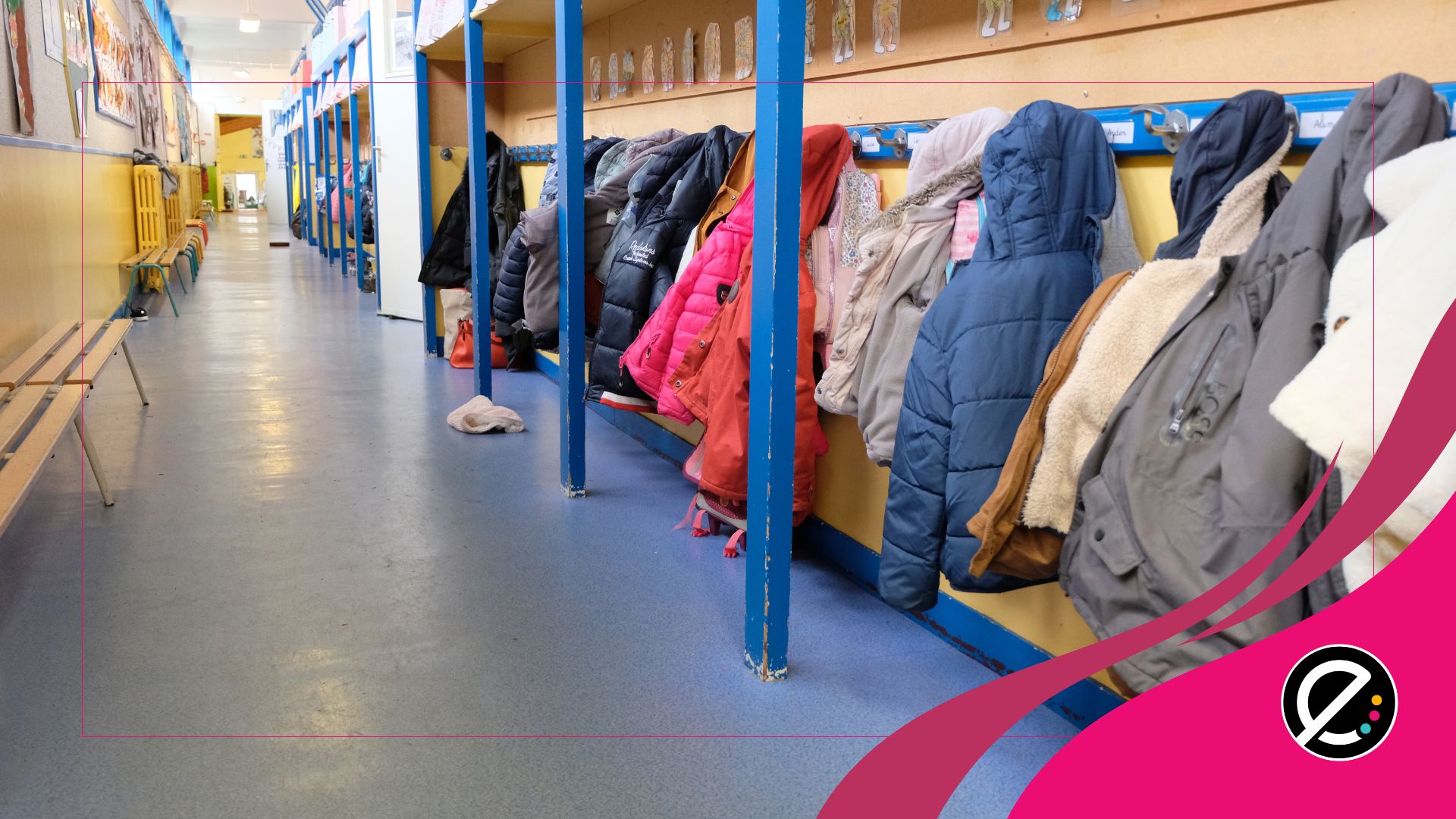Par Michelle Deschênes (Professeure en psychopédagogie de l’enseignement professionnel, Université du Québec à Rimouski) et Séverine Parent (Professeure en technologie éducative et littératie numérique, Université du Québec à Rimouski, campus de Lévis)
Ce texte a d’abord été publié dans le magazine La Foucade (Vol. 20, no 2, juin 2020), réalisé par le Comité québécois pour les jeunes en difficulté de comportement (CQJDC). Il est reproduit par l’École branchée avec l’accord des auteures et des responsables du magazine.
On constate depuis quelques années une augmentation importante du nombre d’élèves qui possèdent un appareil pouvant recevoir et envoyer des textos (Beaumont, Leclerc et Frenette, 2018). Au primaire, on note une augmentation de 61 % en 2013 à 79 % en 2017. Au secondaire, le taux passe de 76 % en 2013 à 92 % en 2017. Chez les 12 à 15 ans, un jeune sur deux possède un téléphone intelligent ou multifonctions (CEFRIO, 2017).
Cette utilisation des téléphones multifonctions par les jeunes soulève des enjeux qui concernent la citoyenneté numérique, définie comme le fait de « posséder des équipements et des compétences liés aux TIC [technologies de l’information et de la communication] […] permettant de participer à la société numérique » (UNESCO, 2011, p. 102).
Bien que ce soit une expression largement utilisée, nous émettons des réserves quant à l’utilisation du terme « intelligent ». Nous lui préférons le terme « téléphone multifonctions ».
Une occasion d’accompagner les élèves
Les appareils numériques dans la classe, que ce soit les tablettes, les portables ou les téléphones, peuvent être utilisés de multiples façons. Ils permettent notamment de faire des recherches, de répondre à des questionnaires interactifs, de participer aux conversations sur des réseaux sociaux pédagogiques, d’accéder à des fichiers, de prendre de photos et de produire des montages vidéo.
Au-delà du potentiel des appareils mobiles pour soutenir les apprentissages, l’utilisation des téléphones en classe permet d’aborder des sujets liés à la citoyenneté à l’ère du numérique. Dans son Plan d’action numérique, le Ministère de l’Éducation et de l’Enseignement supérieur (MEES, 2018, p. 34) affirme que « les établissements d’enseignement doivent accompagner efficacement les élèves […] dans leur usage du numérique et les amener à adopter un comportement responsable ».
Ainsi, il semble essentiel d’aborder des sujets comme la saine hygiène numérique, l’identité numérique, le droit à l’image, la cyberintimidation et le plagiat. De plus, « agir en citoyen éthique à l’ère du numérique » est au cœur du Cadre de
référence de la compétence numérique (MEES, 2019).
Bien que le potentiel pédagogique puisse sembler prometteur, des défis et des enjeux sont reliés à l’utilisation d’appareils mobiles en classe, notamment en ce qui concerne l’utilisation inappropriée par les élèves. Sans aborder la cyberdépendance, force est de constater que l’omniprésence des téléphones intelligents a des répercussions dans notre vie réelle et virtuelle (pour plus de détails, consultez le dossier « Il est temps de décrocher ! » du magazine L’actualité).
Différentes initiatives sont mises en place dans les établissements scolaires pour accompagner les élèves dans l’utilisation de leur téléphone et des différentes applications auxquels il donne accès. Dans certaines écoles, des enseignants utilisent des ressources comme « Vers une identité positive à l’ère du numérique » pour animer des activités. Des enseignants utilisent un contrat signé par l’élève et ses parents afin de les sensibiliser à un usage responsable de leurs outils numériques. Dans d’autres écoles, un membre du corps policier rencontre les élèves pour discuter de sujets comme la cyberintimidation et les réseaux sociaux. Ailleurs, des discussions informelles sont tenues lorsque l’enseignant ou l’enseignante le juge nécessaire.
Des ressources sont disponibles pour aborder les droits et responsabilités en matière de droit à l’image et de cyberintimidation. La section jeunesse du site Educaloi propose une page sur le droit à l’image et les gestes interdits par la loi en matière de cyberintimidation. La section Enjeux numériques du site Habilo Médias propose également différentes ressources.
Des stratégies pour tirer profit des appareils mobiles
Une utilisation efficace des appareil mobiles en classe se gère comme tout comportement en classe : prévenir l’indiscipline par une gestion de classe efficace (Gaudreau, 2015). Ainsi, il peut être intéressant de tirer profit des appareils mobiles en classe en mettant en place des stratégies en amont et en intervenant lorsque la situation le nécessite. Donner des repères clairs permet d’encourager une utilisation appropriée des outils non seulement en classe, mais aussi dans
le quotidien des élèves (Moreau et Bigras-Dunberry, 2017).
Travailler en amont
Pour s’assurer d’une intégration pédagogique des appareils mobiles le plus harmonieuse possible, certaines réflexions sont nécessaires et certaines actions devraient être posées préalablement.
Prévoir une réflexion institutionnelle
En équipe-école, discutez des possibilités pédagogiques et des contraintes perçues par chacun. Déterminez ce qui représente des comportements acceptables en matière d’utilisation des appareils, à la fois par les élèves et le personnel enseignant.
Vous pourrez ainsi contribuer à promouvoir un usage sécuritaire, responsable et sain des technologies mobiles (UNESCO, 2013). La France et l’Ontario ont fait le choix d’interdire les téléphones intelligents en classe. Au Québec, certaines initiatives inspirées du BYOD (Bring your own device, un terme traduit par AVAN pour « Apportez votre appareil numérique » ou « Apprendre avec votre appareil numérique ») où les élèves sont invités à apporter un appareil numérique, ont lieu dans certains établissements ou dans certaines classes. Toutefois, il semble que la majorité des écoles primaires interdise les téléphones.
Au secondaire, il semble que l’encadrement soit plus variable : la gestion des téléphones est parfois laissée à la discrétion de l’enseignant, les règles de l’école en permettent parfois l’utilisation durant les pauses. Dans d’autres établissements, il est interdit en tout temps. L’interdiction en classe prive malheureusement l’éducation de nouvelles perspectives et peut empêcher l’innovation dans l’enseignement et l’apprentissage (UNESCO, 2013).
De nombreux témoignages de praticiens dans les pages du magazine de l’École branchée ou encore des partages de pratique au congrès de l’AQUOPS permettent de témoigner d’une intégration réussie du téléphone en classe, notamment pour l’intégration de la réalité virtuelle en classe. Le site du RÉCIT en univers social propose des activités pour intégrer la réalité virtuelle à l’aide notamment d’un téléphone intelligent.
Une réflexion quant à l’utilisation des téléphones intelligents a aussi lieu dans les institutions postsecondaires, tant au collégial qu’à l’université. Si aucune politique ne semble l’avoir complètement interdit au postsecondaire, les besoins d’accompagnement quant à l’intégration des TIC, notamment le développement des compétences des étudiants, mais aussi des professeurs, en matière d’utilisation pédagogique des appareils mobiles en classe est identifié comme un défi qui reste à relever (Groupe de travail sur l’utilisation des appareils mobiles en classe, 2015).
L’article « Tablettes et cellulaires ont-ils leur place au cégep? Entretien avec Nicole Perreault, animatrice du Réseau des REPTIC » paru dans Profweb.ca en février 2018 souligne quelques défis de la mobilité au collégial.
Inclure les élèves dans la définition des règles de classe
Une fois les grandes lignes définies, il est intéressant d’impliquer les élèves dans la rédaction de règles encadrant l’utilisation des appareils mobiles dans la classe (Trussart, 2017). Il est alors possible de profiter de l’occasion pour expliciter vos limites. Pour bien baliser les moments et les situations où l’utilisation des appareils est souhaitée, permise ou proscrite, différentes stratégies sont possibles : explications verbales ou utilisation de pictogrammes. N’hésitez pas à rappeler les règles en début de journée ou en début de cours.
Choisir les moments, les activités
Pour optimiser les répercussions positives de l’utilisation des appareils mobiles en classe, prévoyez les utiliser dans des activités où les appareils permettront de redéfinir l’expérience d’apprentissage. Le modèle SAMR (Puentedura, 2010) propose à cet effet quatre niveaux d’intégration pédagogique des TIC, passant de la transformation à l’amélioration : redéfinition, modification, augmentation et substitution.
Utiliser un téléphone multifonctions pour prendre des notes qui auraient pu être prises sur papier pourrait n’avoir qu’un faible intérêt pour les élèves, l’appareil se substituant au papier sans valeur ajoutée. Les possibilités des logiciels éducatifs ou grand public permettent, par les fonctionnalités qu’ils offrent, de bonifier l’activité : par exemple, le fait d’enregistrer les notes en ligne les rend plus accessibles puisqu’il est possible d’y faire des recherches.
Une reconfiguration de la tâche, en faisant collaborer les élèves à la prise de note simultanée et collaborative par exemple, permettrait d’envisager des répercussions pédagogiques plus intéressantes. Par ailleurs, comme le rappelle Stéphanie Lemieux, directrice adjointe dans une école secondaire : « Pour intégrer la technologie en classe, il n’est pas nécessaire d’être un expert de la technologie, mais bien de la pédagogie ».
Intervenir au besoin
Même si les règles sont définies en collaboration avec les élèves, et même si les moments d’utilisation des appareils numériques sont clairement précisés, il se peut que des élèves n’utilisent pas les appareils de façon appropriée : des élèves qui textent, qui accèdent à des réseaux sociaux qui ne soutiennent pas l’activité pédagogique, qui visionnent des vidéos, qui prennent des photos sans y être autorisés, par exemple.
Si cela se produit, les mêmes stratégies que celles que vous utilisez lorsque tout type de comportements inappropriés peuvent être utilisées : enseignement explicite des comportements attendus et renforcements fréquents de ceux-ci, ignorance intentionnelle de certains comportements, application de conséquences logiques et naturelles en réponse aux écarts de conduite (Webster-Stratton, 1999; WebsterStratton, Reid et Stoolmiller, 2008 : cités dans Gaudreau, 2015). Vos élèves seront en terrain connu et vous aussi.
Conclusion
Différentes opportunités de perfectionnement en lien avec l’utilisation des appareils mobiles sont accessibles, notamment les autoformations du RÉCIT et de CADRE21 ou les ateliers au colloque annuel de l’AQUOPS. N’hésitez pas à vous faire accompagner et à échanger avec vos collègues. D’intéressantes discussions ont lieu les réseaux sociaux, notamment sur le groupe Facebook Les TIC en éducation ou en suivant le motclic #eduprof sur Twitter. Vous pourrez ainsi mieux contribuer à préparer les élèves aux études supérieures et plus globalement, à être des citoyens à l’ère du numérique.
Références
– Beaumont, C., Leclerc, D. et Frenette, E. (2018). Évolution de divers aspects associés à la violence dans les écoles québécoises 2013-2015-2017. Québec, Qc : Chaire de recherche Bien-être à l’école et prévention de la violence, Faculté des sciences de l’éducation: Université Laval.
– CEFRIO. (2017). Visionnement connecté par les jeunes au Québec. Usage du Web, médias sociaux et mobilité. Montréal, Qc : CEFRIO.
– Gaudreau, N. (2015). Prévenir l’indiscipline par une gestion de classe efficace. La Foucade, 15(2), 3-4.
– Groupe de travail sur l’utilisation des appareils mobiles en classe. (2015). L’utilisation des appareils mobiles en classe. Rapport. Québec, Qc : Université Laval.
– Lemieux, S. (2020, 5 février). Intégrer le numérique en classe en douceur : échange avec deux élèves.
-Ministère de l’Éducation et de l’Enseignement supérieur. (MÉES). (2018). Plan d’action numérique en éducation et en enseignement supérieur. Québec, Qc : Gouvernement du Québec.
– Ministère de l’Éducation et de l’Enseignement supérieur (MEES). (2019). Cadre de référence de la compétence numérique. Québec, Qc : Gouvernement du Québec.
– Moreau, C. et Bigras-Dunberry, C. (2017). De l’encadrement des technologies mobiles en classe pour un engagement actif des étudiants. Le tableau, 6(4), 1-2.
– Puentedura, R. R. (2010). SAMR and TPCK: Intro to advanced practice.
– Trussart, 2017). La gestion de classe à l’ère du numérique (partie 1) : Entre cohérence et tolérance.
– UNESCO. (2011). TIC UNESCO : un référentiel de compétences pour les enseignants. Paris, France : Auteur.
– UNESCO (2013). Principes directeurs de l’apprentissage mobile. Paris, France : Auteur.
Remerciements
Les auteures du texte remercient sincèrement les enseignantes et enseignants qui ont répondu à l’appel à tous sur l’utilisation du questionnaire en classe. Un remerciement tout spécial à François-Henri Lafarge et Gilbert Olivier qui ont accepté de relire le texte et de le bonifier avant sa parution.






